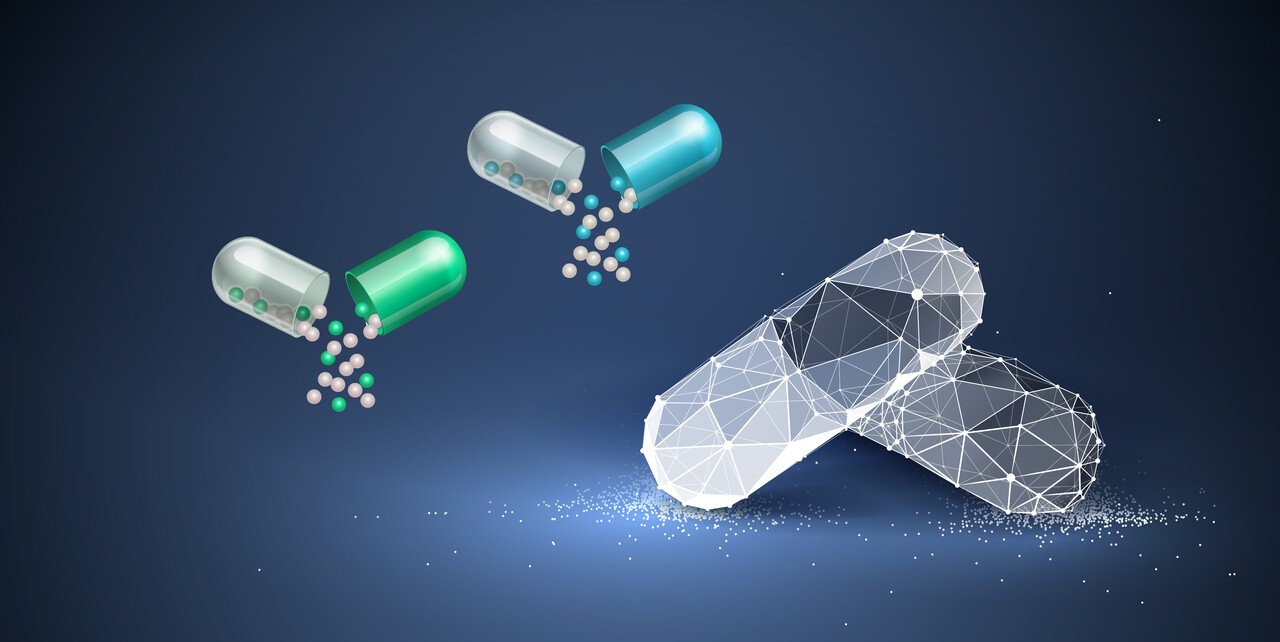In this post, we explore multi-drug combination screening studies, including major design and analysis strategies, and how novel high content technologies are being used to identify promising multi-drug combination regimens more efficiently.
Combination Therapy Rationale
Combination therapy has long been an important foundation for improving treatment outcomes in several complex conditions, including cancer. In cancer treatment, combinatorial treatments have often shown enhanced tumor cell killing, reduced toxicity, and lower levels of drug resistance. These benefits are achieved by simultaneously targeting multiple key cancer pathways to yield synergistic, antagonistic, or additive effects.
However, despite the well-documented benefits offered by combinatorial drug strategies, the identification and translation to the clinic of new and effective drug combinations remains challenging, especially when it comes to the evaluation and quantification of drug combination effects.
In general, drug combination screens answer three specific questions about drug effects:
- Pharmacological: Does the combination produce a synergistic, antagonistic, or additive effect?
- Within-Tumor Heterogeneity: Is the effect of the combination homogenous, or does it have differing effects on specific cell types or structures of the tumor
- Between-Tumor Heterogeneity: What is the combination effect across a stratified population?
While the quantification and analysis of high-throughput drug combination effects has been a major obstacle in identifying promising novel combination strategies, advanced high-throughput screening technologies—such as high content imaging (HCI) and high content analysis (HCA)—are now being used to develop answers more efficiently to these drug combination questions. Below we first discuss standard drug combination study design and analytic options, followed by high content screening in combinatorial drug screening studies.
Standard Drug Combination Study Design Options
Three types of drug combination study designs are most commonly implemented, and the one that is chosen is largely dependent on the research question(s) being asked. In addition, it should be noted that combination screening studies can be run with a few models, or across large, stratified panels of 3D organoids alongside 2D and 3D cell-line derived in vitro models.
- Fixed ratio is the simplest design where two drugs are combined in a single dose. This is easily scaled for triple or quadruple combinations and offers data that is easily processed by high-throughput and automated screens. In general, data from this type of design are limited by a lack of dose-response information
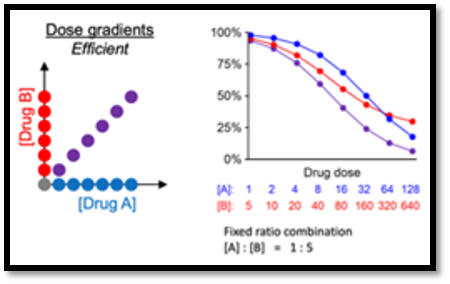
- Fixed concentration design involves two drugs that are tested in a linear series of dose combinations. This design can be scaled up for triple or quadruple combinations of drugs, but to provide the best results, some background knowledge of dosing ratios is required. Unlike fixed ratio studies, fixed concentration designs provide dose-response data.
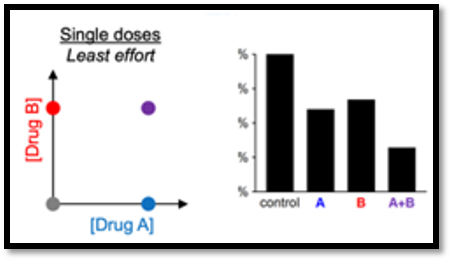
- Matrix design is the most complex and requires highly intensive analytics. While this design is restricted to two-drug combinations, it yields comprehensive data including information about drug interactions and dosing across a wider range of ratios as compared to the simpler designs.
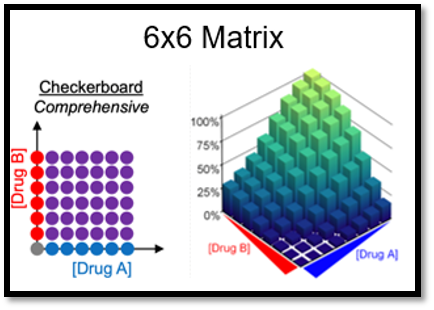
As for analytical models, there are two main ones that can be used, and the one that is selected is dependent on the research question(s) being asked and whether it is known whether the drugs target the same pathway or not. For both models, heatmaps and surface plots are provided as visual representations of the data.
The first type is the Loewe additivity model defines the expected effect as if a drug was combined with itself and is useful to evaluate whether compounds A + B provide a more powerful response, as opposed to the effects of simply increasing dosages of A or B alone.
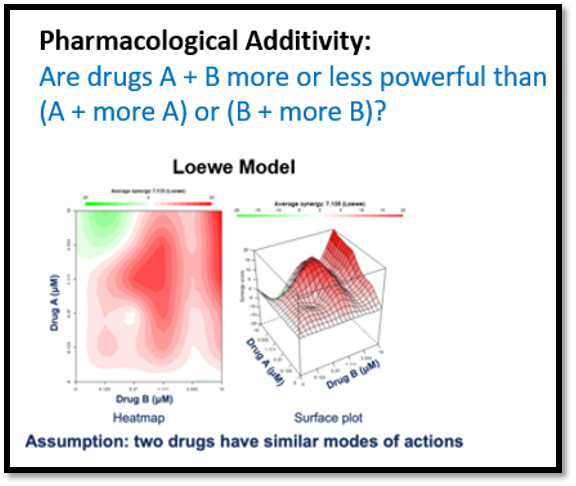
The second type is the Bliss independence model which is used to model the effects of individual drugs in a combination as independent yet competing events. For instance, one can ask whether the probability of cell death from drug A is statistically independent of the probability of cell death from drug B in a population of cells or organoids.

High Content Screening Applied to Drug Combinatorial Studies
Major advances in computational technologies have led to algorithm-based processes that can process vast amounts of data arising from large numbers of models in an efficient, reliable, and understandable manner by producing dose-response curves, combination index graphs, inhibition heat maps, 2D contour maps, and 3D response surface plots (e.g., see here for the CrownSynTM bioinformatics service). The powerful algorithms quantitate the combinatorial effects using dose-response curves that arise from fixed ratio or matrix/ designs where a constant or variable concentration ratio of multiple drugs is used, respectively.
High content technologies are now being used in high-throughput in vitro multi-drug combination studies. As described previously, the term “High Content” generally refers to the fact that many morphological parameters/features (which are measured using fluorescent dyes) of individual cells can be simultaneously evaluated in an automated fashion, such as cell cycle status, cellular and nuclear morphology, cell viability, receptor internalization, protein aggregation, and so on, in traditional 2D cell lines, spheroids, and organoids.
HCI and HCA were recently used to successfully support a complex, matrixed, three-drug combination screening where phenotypic changes in the lumen and organoid area were quantified to answer specific research questions. The results of the 3D image analysis are shown in the plots (A) and images (B) below, while the quantification of phenotypic changes and matrixed response measurements are shown in the heatmap (C).

Conclusion
Combination therapies represent an important strategy for treating various complex diseases. While their identification has been traditionally challenging, novel technologies are enabling researchers to identify effective novel combinations more efficiently. However, combination drug screening study designs are highly dependent on the research question(s) being asked, so prior to embarking on a new study, we suggest getting in touch with experts in combination drug study design to ensure your study is optimized for success.
Learn more about how Crown Bioscience can support your multi-drug combination screening project.

